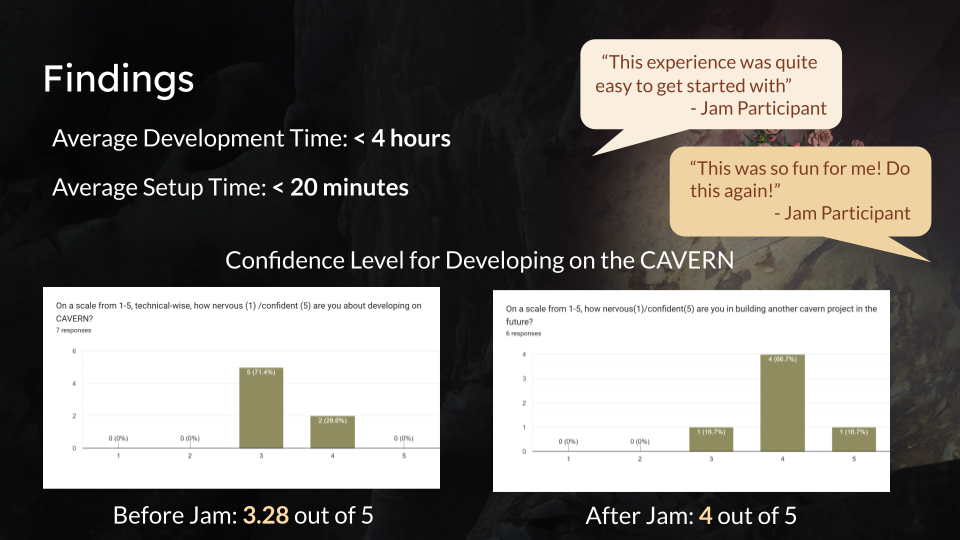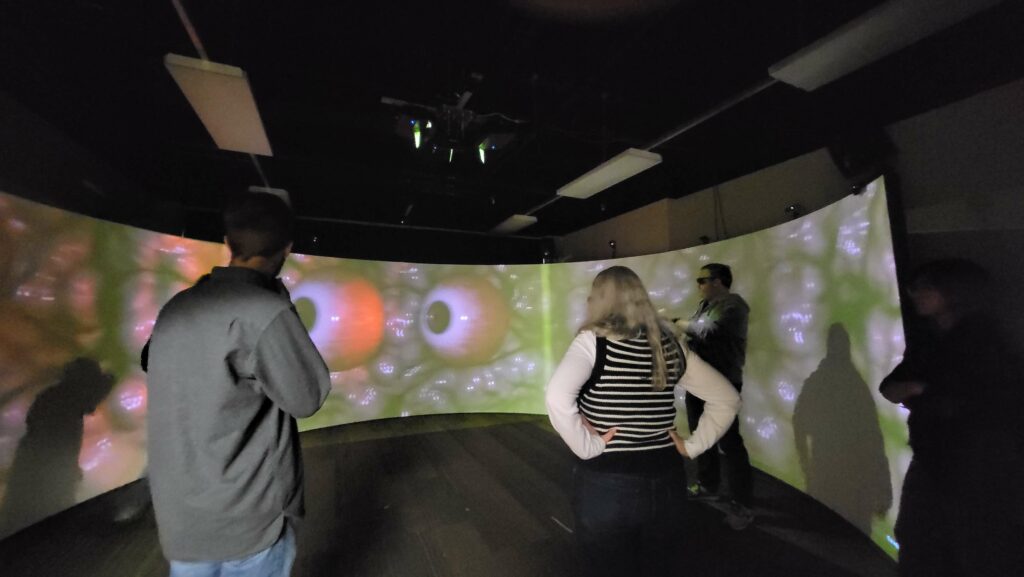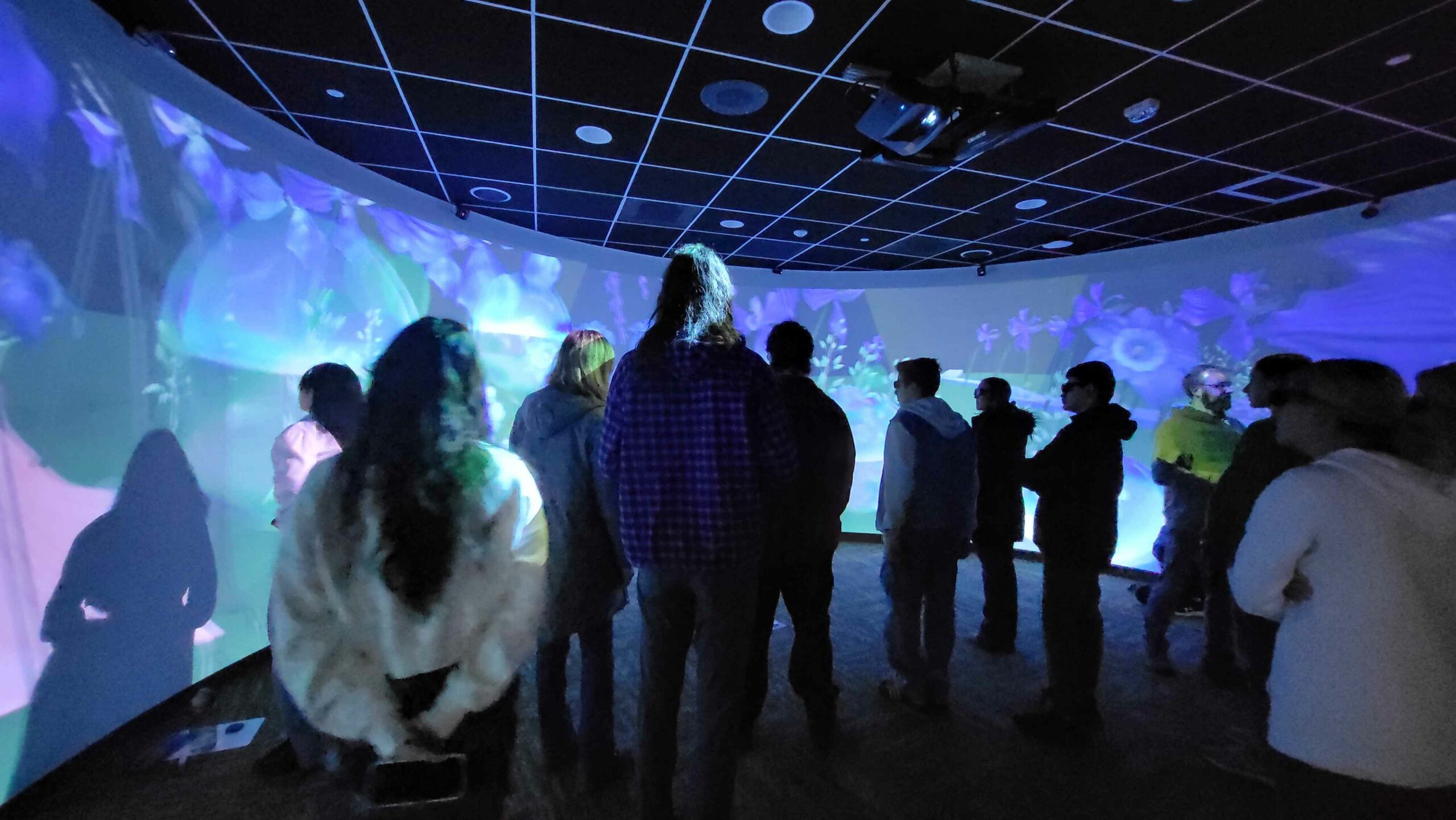It is now week 7, and it is time for Halves Presentations! In addition, we hosted an official half-semester showcase within ETC and also demonstrated CAVERN’s capabilities to educators across K-12 in South Fayette, showcasing how CAVERN can be used across different contexts, and how our showcase is a great tool to enable those. And of course, our team went to a celebratory brunch at the end of the week to end this half-semester before going into spring break.
Halves Preparations
Because so much of the CAVERN development is technical work that happens under the hood, it is crucial to communicate our impact thoughtfully, especially in way where even non-technical audiences can also understand clearly. To do so, we decided to start off the presentation by highlighting the success of the CAVERN Jam, followed by introducing our problem solving process and results of our works on rendering, Vive trackers, editor workflow, and sample scene, with emphasis on our comprehensive documentation along the way.

Since our goal is to have future developers build upon our toolkit, our camera rendering solution has to be well documented and including our thought processes, so people can solve new problems that works within our system. The “Math Documentation” as our team calls it, is then born.
This document starts off by discussing the curved screen and breaks down the possible rendering solutions. It briefly explains the original 32-camera rendering solution and its tradeoffs, and then proposed our single-camera cube map solution with the linear algebra math derivations alongside. At the end of the document, we arrived at the solution of head-tracking, and why it became trivial to solve once we’ve chosen to duplicate the cube maps and treat the head.
As much of the CAVERN is better seen in person, on the day after the presentation, we invited everyone from the department to join our official half-semester showcase, where we showcased what we said during halves presentation, as well as demoing the wonderful worlds built during last week’s CAVERN jam.
Key Feedback from the Showcase
On Thursday, people who were interested in seeing the CAVERN in person joined the showcase. As attendees explored the space, we gathered valuable insights into how people perceive and engaged with CAVERN environments:
- The 3D effect was highly convincing, making the screen “disappear.” This reinforced that our sample scene’s depth and spatial design were effective.
- Horizon alignment felt slightly off in some scenes. This is something we will refine in upcoming iterations.
- People were drawn to more dynamic, reactive interactions. Suggestions included having objects respond to player presence, using subtle movements to enhance immersion.
- Ambience and atmosphere were strong, but directional sound could be showcased better. Now that surround sound is properly configured, we plan to incorporate more layered audio interactions in future updates.

South Fayette Visit – Introducing CAVERN to Educators
On Friday, we visited South Fayette High School for the second time, where we introduced CAVERN to K-12 STEAM teachers across levels within the school, including elementary school, middle school to high school, administration, arts teachers, technology teachers, etc.
Our goal was to demonstrate how immersive environments can be integrated into education and to help teachers understand the process of creating interactive experiences in CAVERN.
During the session, we showcased:
- The fundamentals of CAVERN as an interactive space.
- How students can use Spelunx to quickly develop and test ideas.
- Examples from CAVERN Jam that illustrated creative interaction design.
Many teachers responded in enthusiasm as they saw potential applications in storytelling, science visualization, and interactive learning. One teacher was particularly interested in bringing ancient Rome for teaching history!

After the demo, we talked with Stacey, the teacher running the Game development course for CAVERN, and walked her through the full process of importing Unity packages, setting up scenes, and configuring CAVERN’s display. We also debugged a Blender-to-Unity 6 issue, so that students can properly import 3D models into their projects for the Digital Promise showcase on March 25th.
Brunch in Shadyside
After the visit to South Fayette, our team ended this week with a celebratory brunch at Shadyside! We chatted about our success in development, the toolkit, reaching out with South Fayette, and also chatted about fun things we each are interested in, what each of us would be if we were fruits, etc. We are prepared to take a good rest, so we can come back after spring break for an even more wonderful next half semester.

